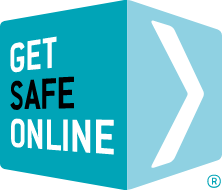Office and home Wi-Fi use the same technology (802.11). There are some common potential issues, whilst each has its own particular risks. You can protect yourself easily with a few simple precautions.
The risks
If your wireless hub/router is not secured, unauthorised / unknown persons or organisations can easily gain access to it if they are within range. This can result in the following:
- Confidential or sensitive information that you may be sending or receiving online being intercepted, resulting in a variety of serious consequences.
- Your bandwidth being taken up – affecting the online speed of your own computers and other devices.
- Your download allowance being used, for which you have paid your Internet Service Provider (ISP).
- Downloading inappropriate material, which would be traced to your address and not that of the user of the offending device.
Safe wireless networking
- All of the above risks can be avoided simply by ensuring that your wireless hub/router is secured. To check that this is the case, simply search for available wireless networks, and those that are secured will be indicated with a padlock symbol.
- When you first connect a computer, smartphone, tablet, printer or any other wireless-enabled device to any wireless hub/router, you will be prompted to enter a password/key, provided the network is in secure mode. This will enable the device to connect on this occasion and normally, for future use. For security reasons, you should change he password/key to one of your own choice before using the Wi-Fi for any communications or transactions of a confidential nature.
- If you are setting up a new hub/router, it will probably have been supplied with security turned on as the default. There are three main encryption levels available (WEP, WPA and WPA2), WPA2 being the highest. Most hubs/routers give you the option of selecting a higher level, but remember that some older devices may not be compatible with higher levels.
- If for any reason a home/office/mobile wireless hub/router/dongle you wish to connect to is not secured, consult the user manual.
- Ensure you have effective and updated internet security software and firewall running before you connect to a wireless network.
- Keep Wi-Fi codes safe so that individuals not authorised to connect cannot do so.
- Remember that the access code is usually printed on the hub/router, so take care to either remove it, or make the hub/router itself inaccessible in the event of an intrusion or people you do not know on the premises.
